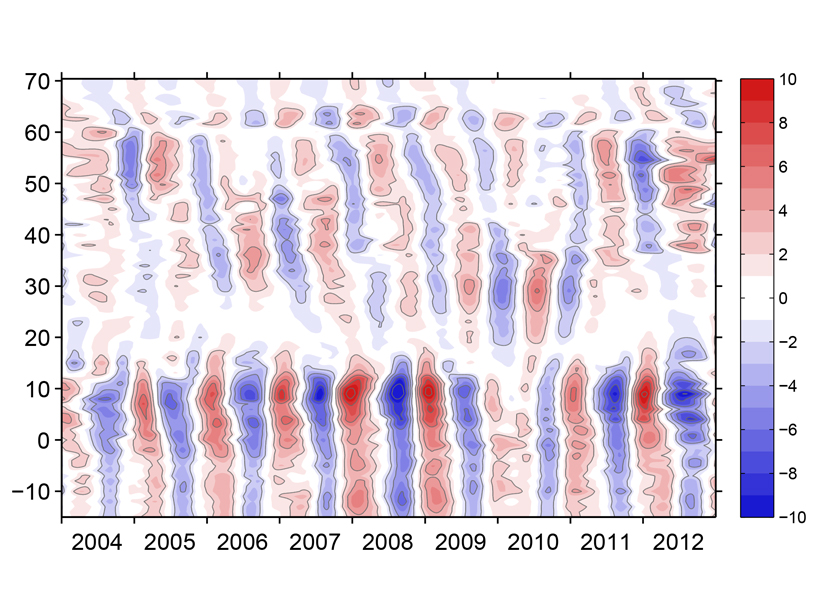The current of warm, salty water that flows north along the east coast of America and then east across the Atlantic Ocean toward Europe is just one arm of the Atlantic’s massive circulation loop. Much of this surface water then cools and sinks in the seas around Greenland, forming a powerful deep water current that travels south toward Antarctica. The strength of this circulation, known as the Atlantic Meridional Overturning Circulation (AMOC), plays an important role in determining global climate by modulating temperatures at high northern latitudes and influencing sea ice extent, among other effects.
To understand how AMOC varies across different timescales and latitudes, Xu et al. compared detailed measurements of ocean currents made by instrument arrays at 26.5° and 41°N with simulations carried out by ocean models. They used two model configurations, one of the Atlantic and another of the world, and forced both with weather data from the Navy Operational Global Atmospheric Prediction System from 2004 to 2012.
The results support a growing body of research that suggests AMOC exhibits much more short-term and seasonal variability than previously thought. This variability appeared in the observations and the models the researchers analyzed. On longer timescales, AMOC was less variable, and changes were correlated across large areas of the ocean. Both models matched the observations extremely well at 26.5°N, suggesting that AMOC variability here arises from regional surface conditions such as wind speed and direction.
The models did not match the data as well at 41°N, possibly because they do not adequately represent the non-wind-driven circulation at this latitude or because the instruments provide an incomplete picture of the currents. Although the researchers did not have observations of the tropical Atlantic, their model results suggested that AMOC south of 20°N experiences a high level of variability. This is largely due to tropical wind patterns but compensated to some degree by the amount of intermediate water flowing north from the South Atlantic. (Journal of Geophysical Research: Oceans, doi:10.1002/2014JC009994, 2014)
—Julia Rosen, Freelance Writer
Citation: Rosen, J. (2015), Variability in Atlantic circulation partly driven by wind, Eos, 96, doi:10.1029/2015EO022487.
Text © 2015. The authors. CC BY-NC 3.0
Except where otherwise noted, images are subject to copyright. Any reuse without express permission from the copyright owner is prohibited.

